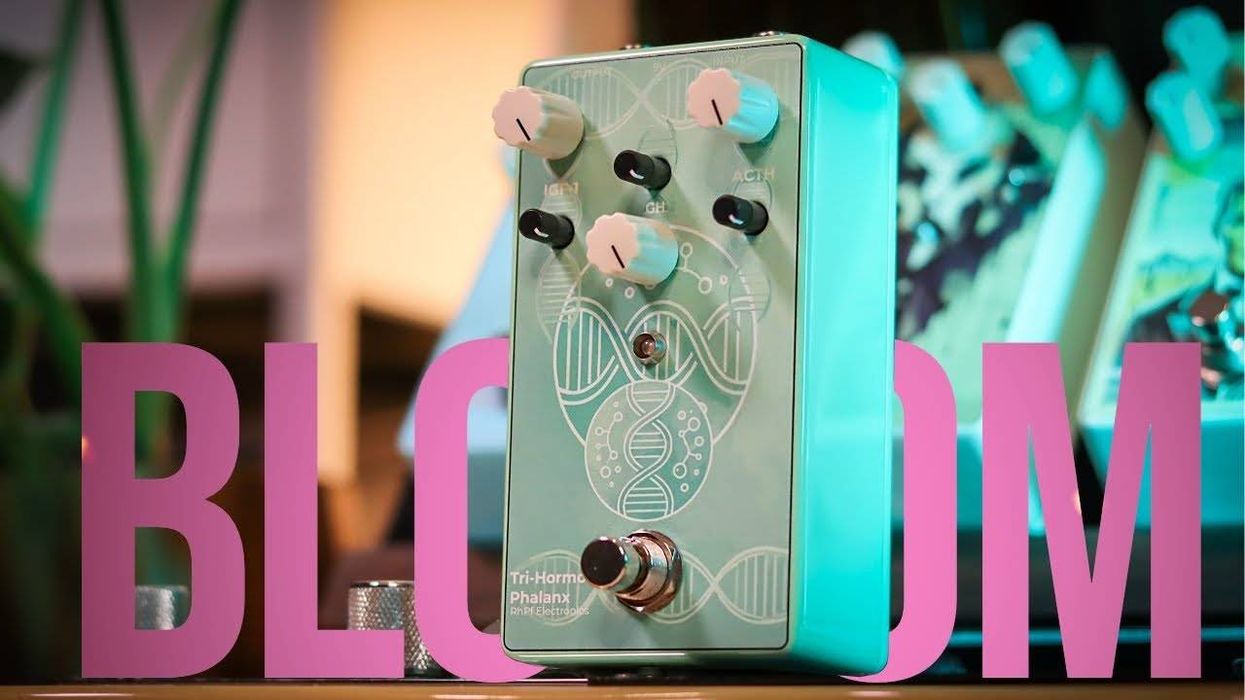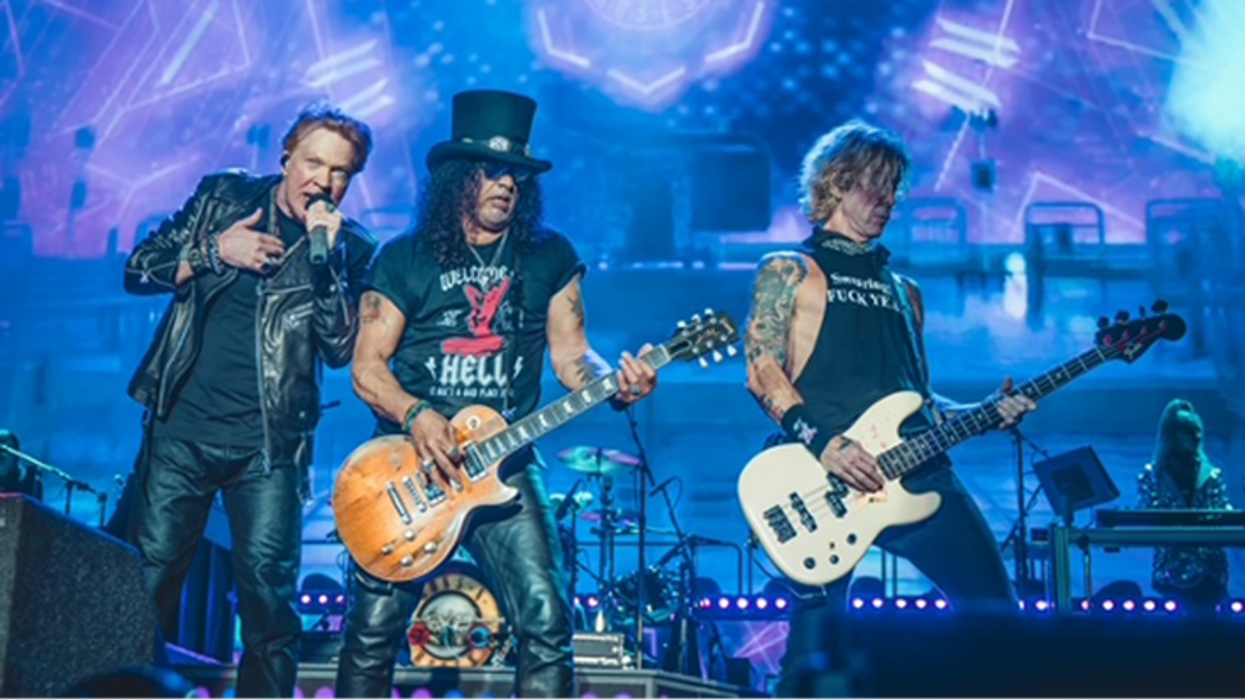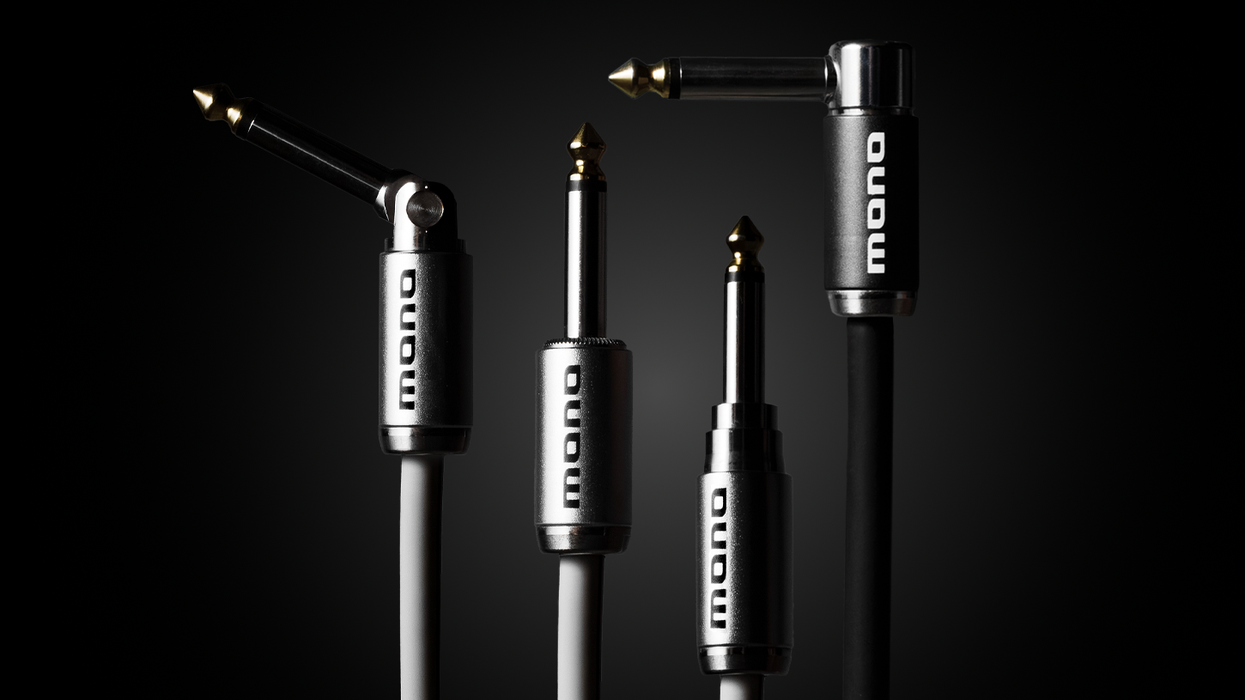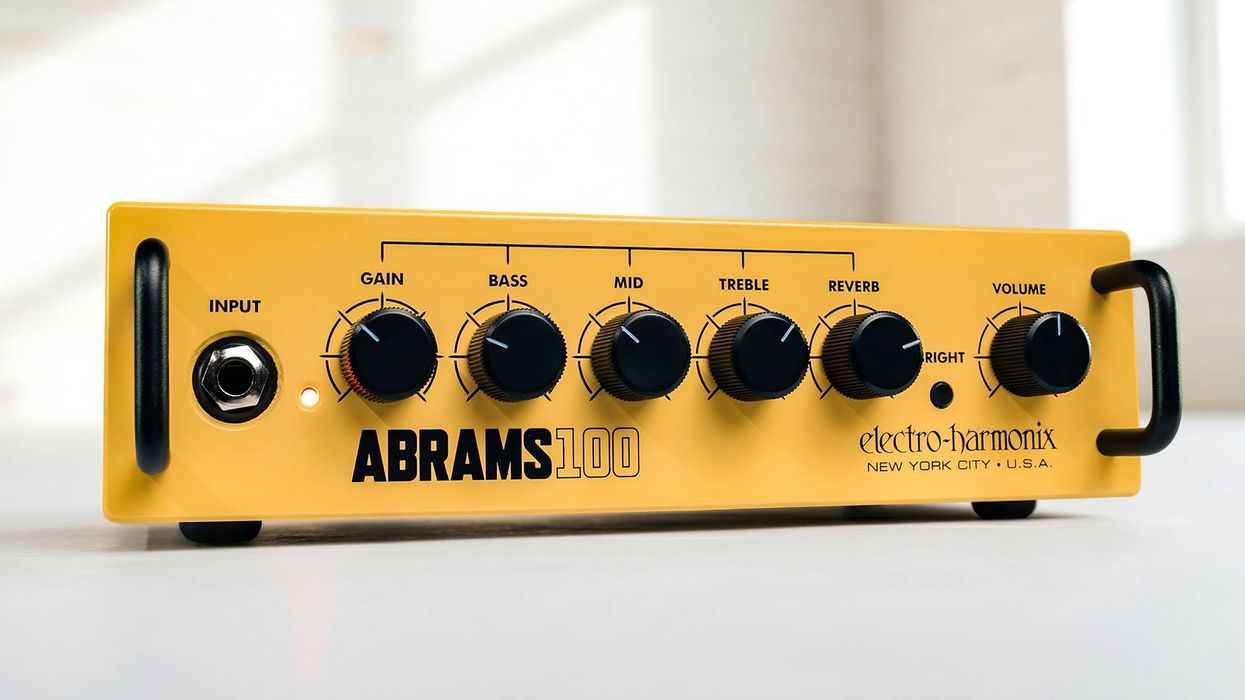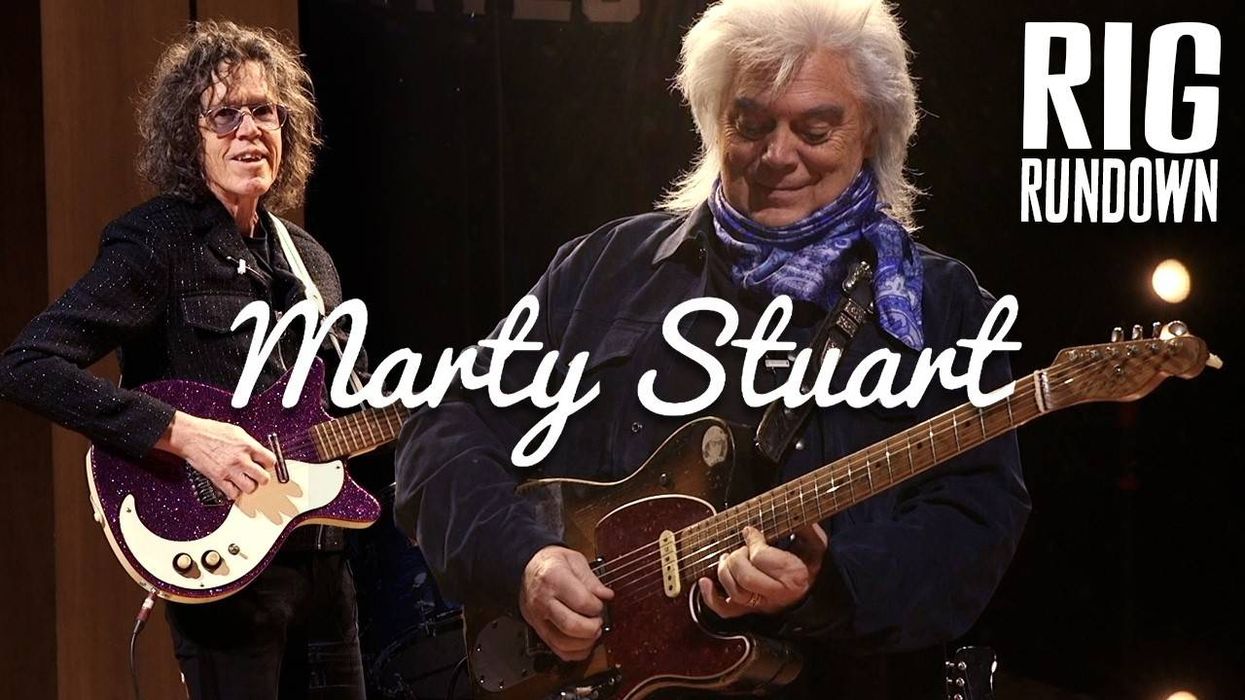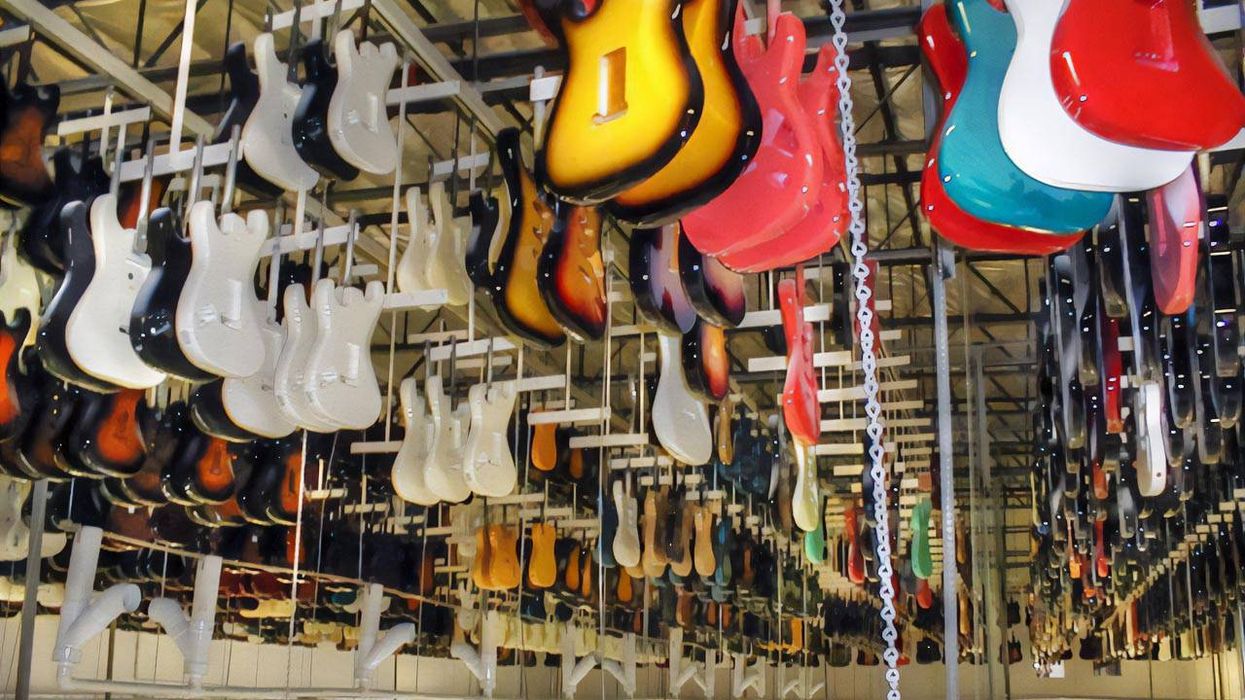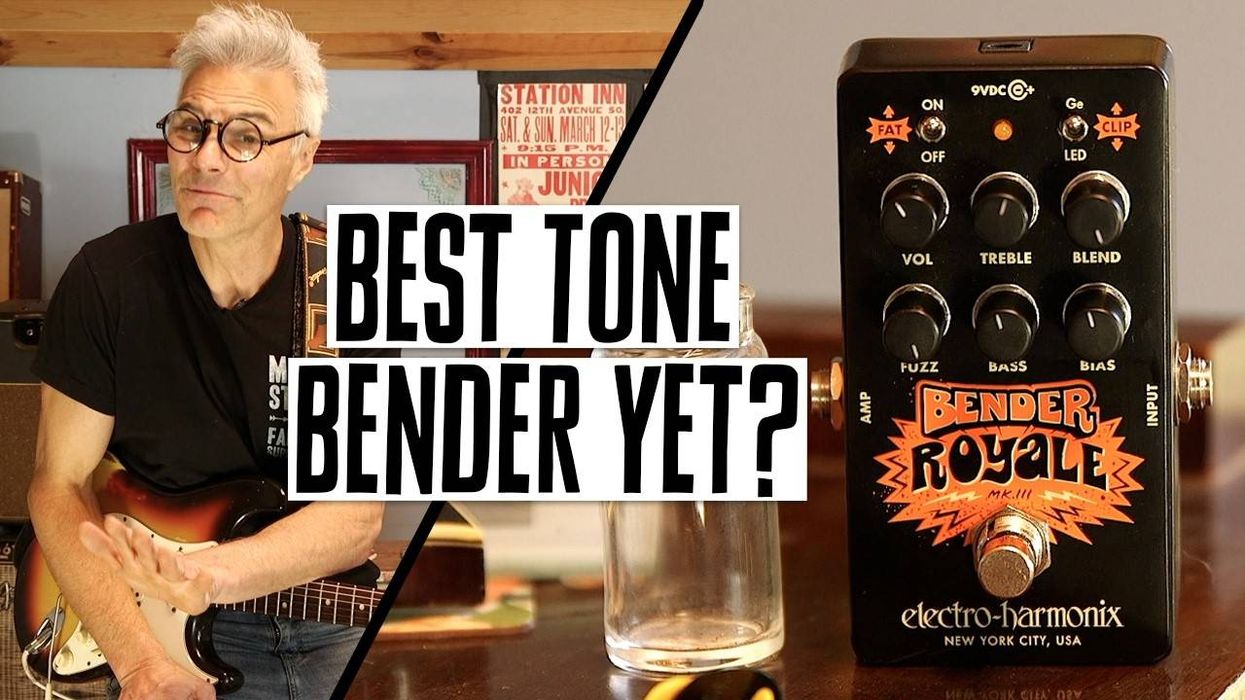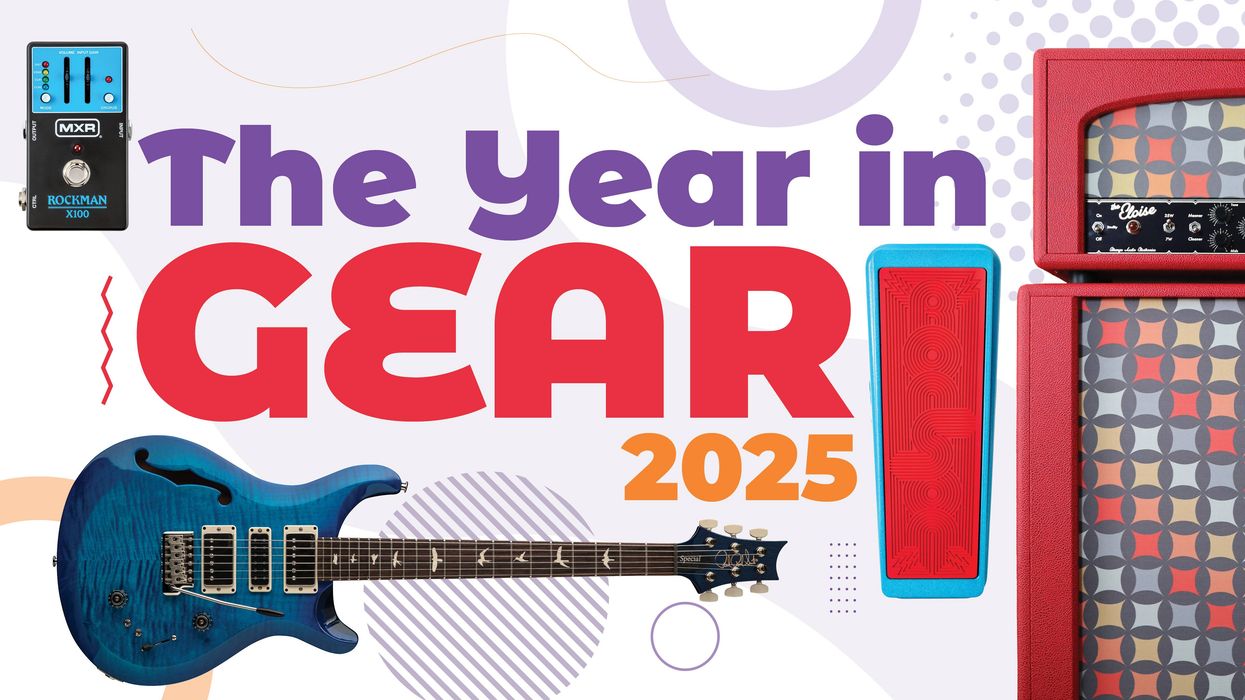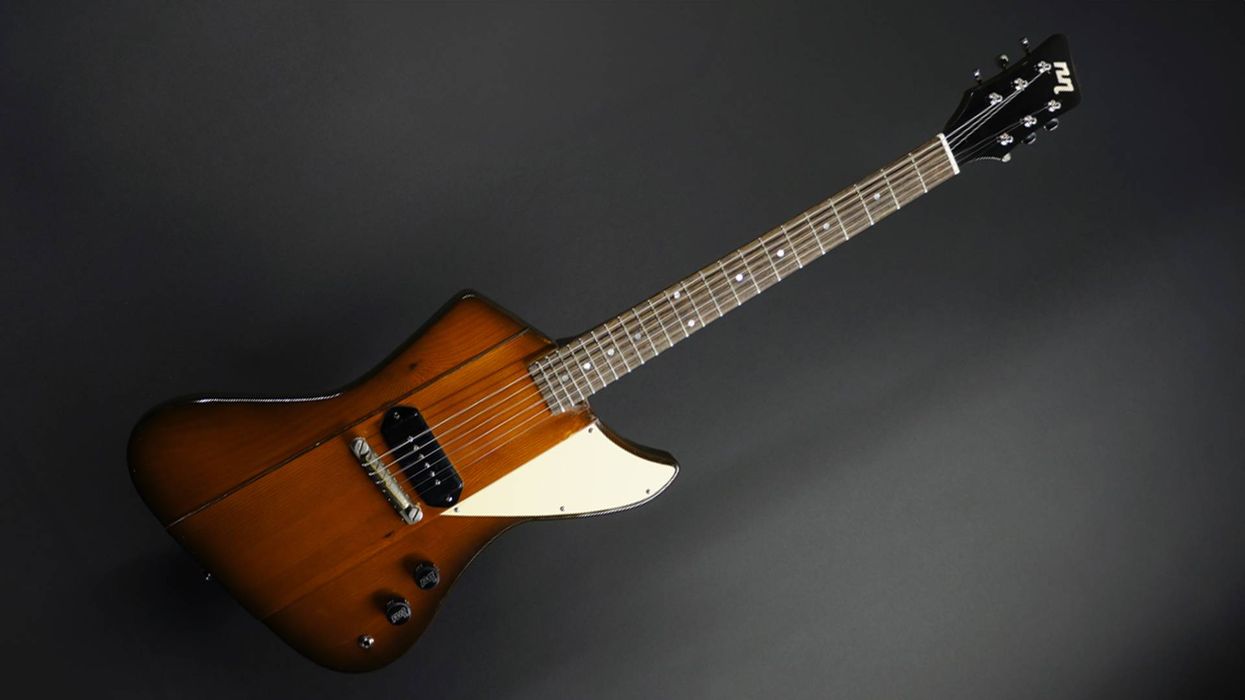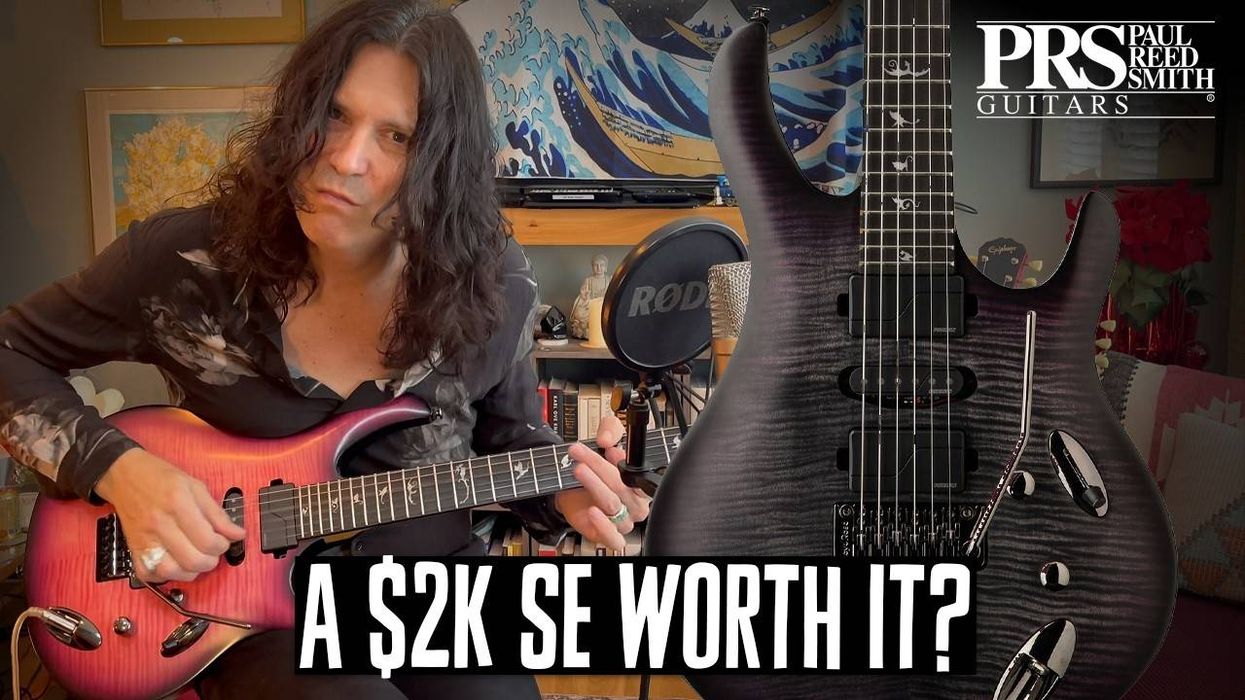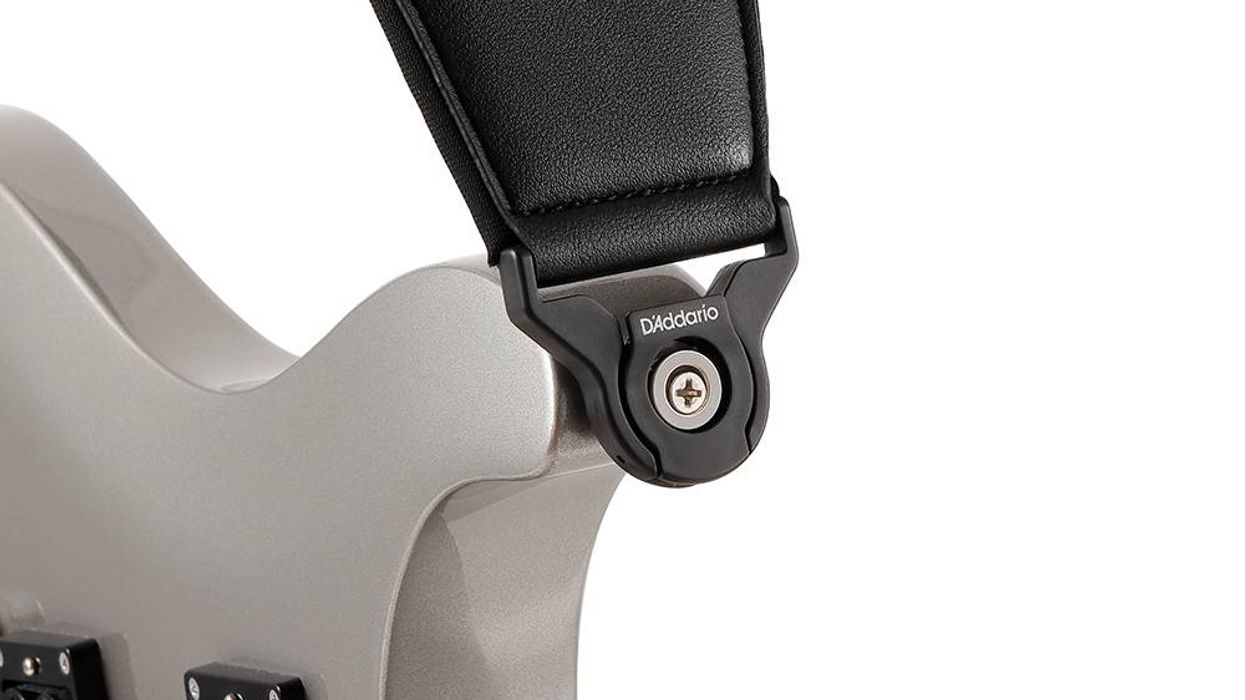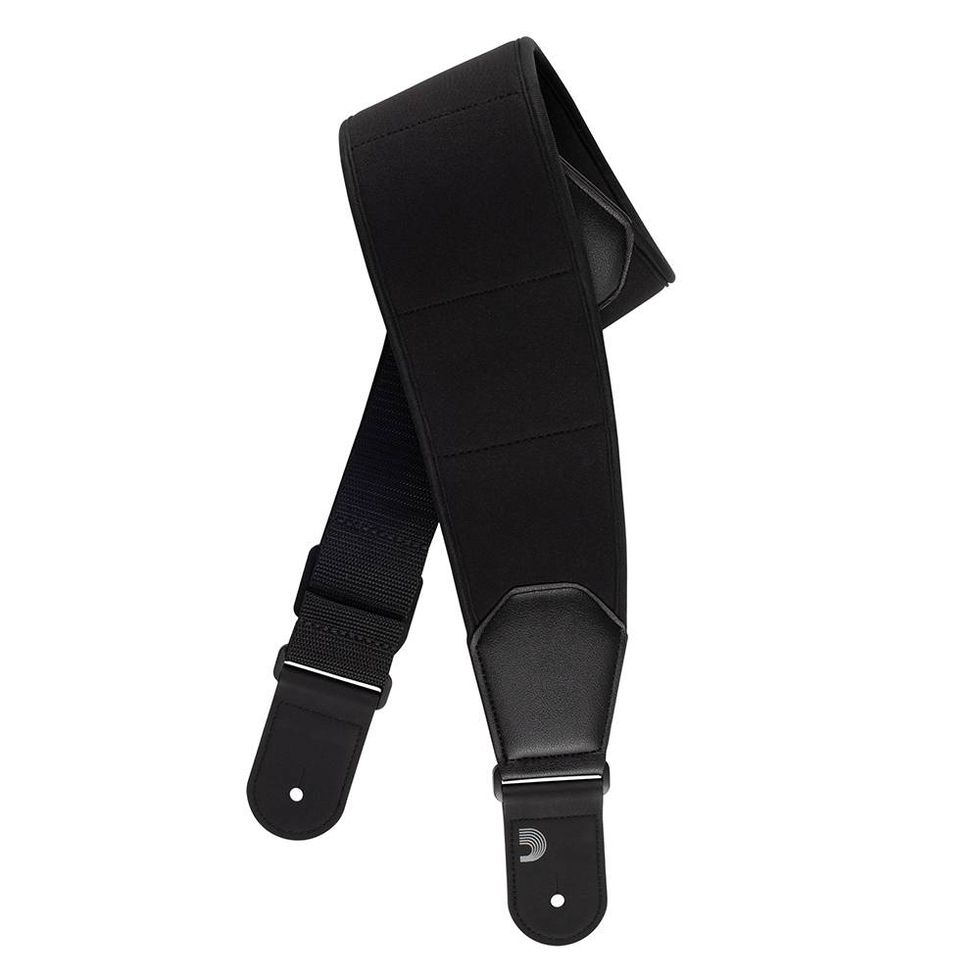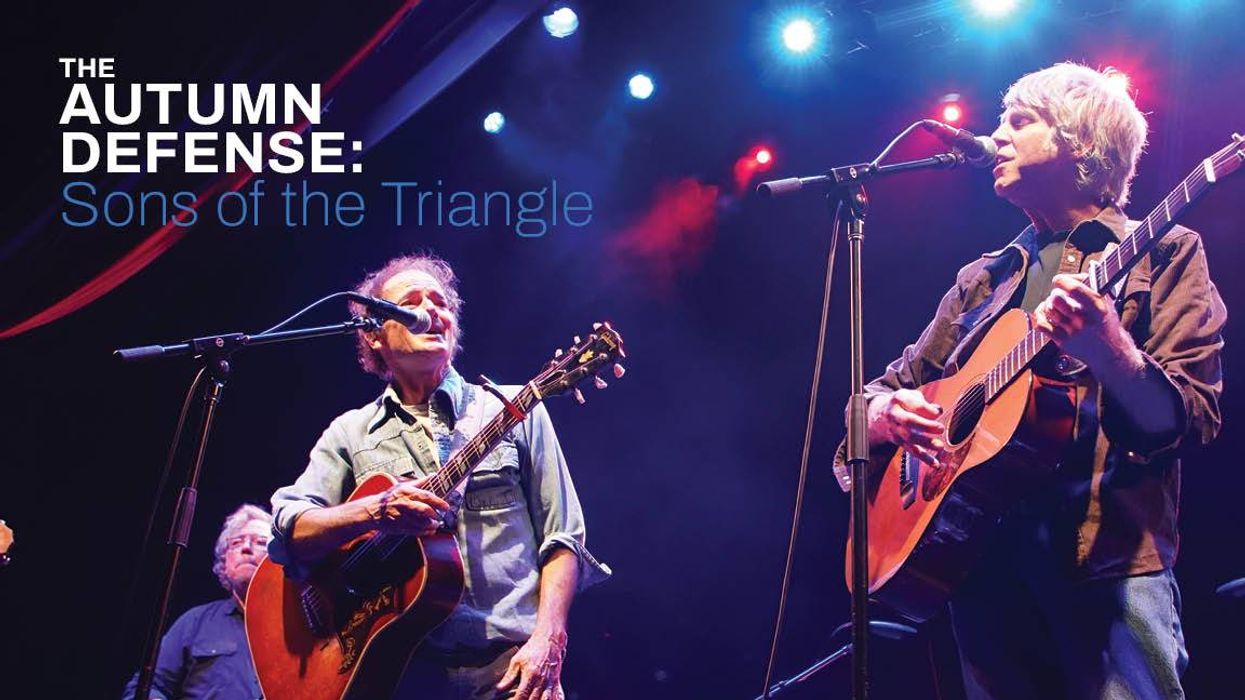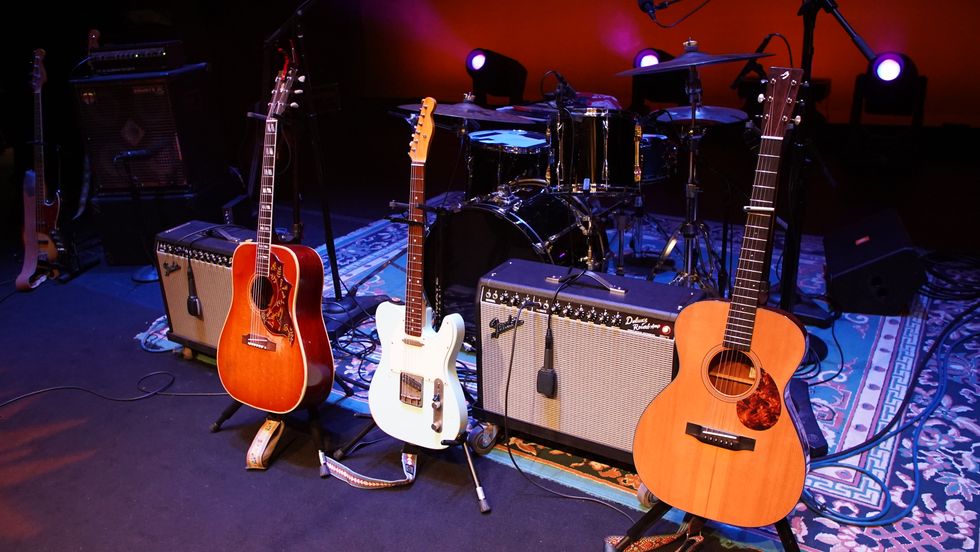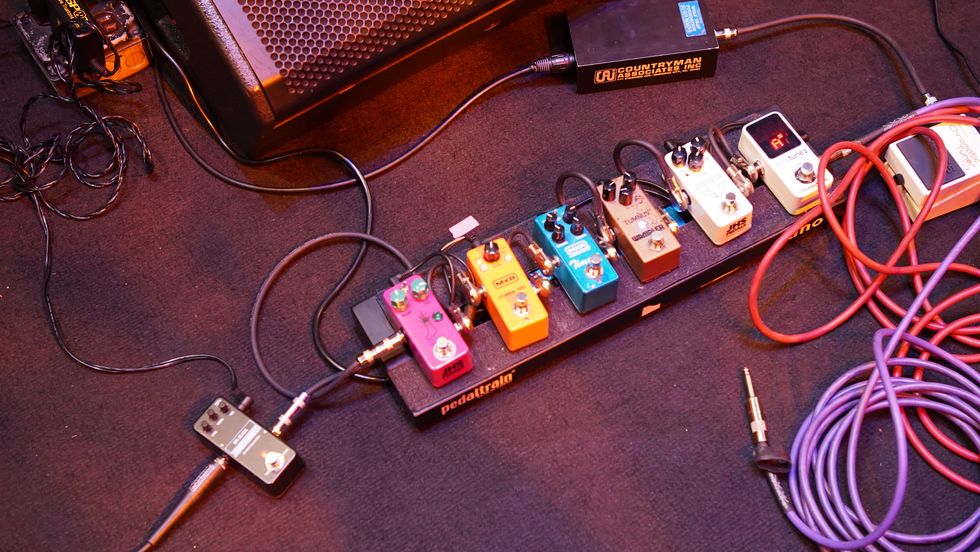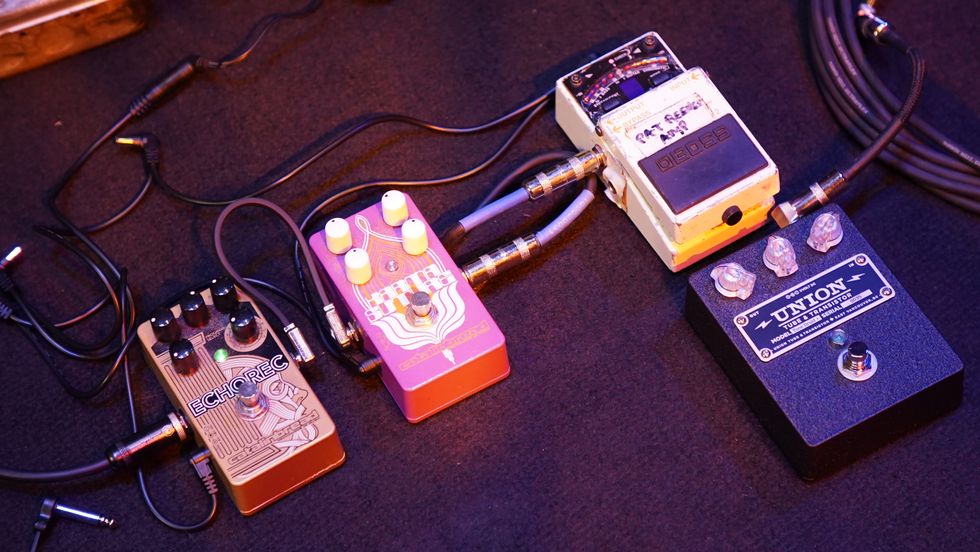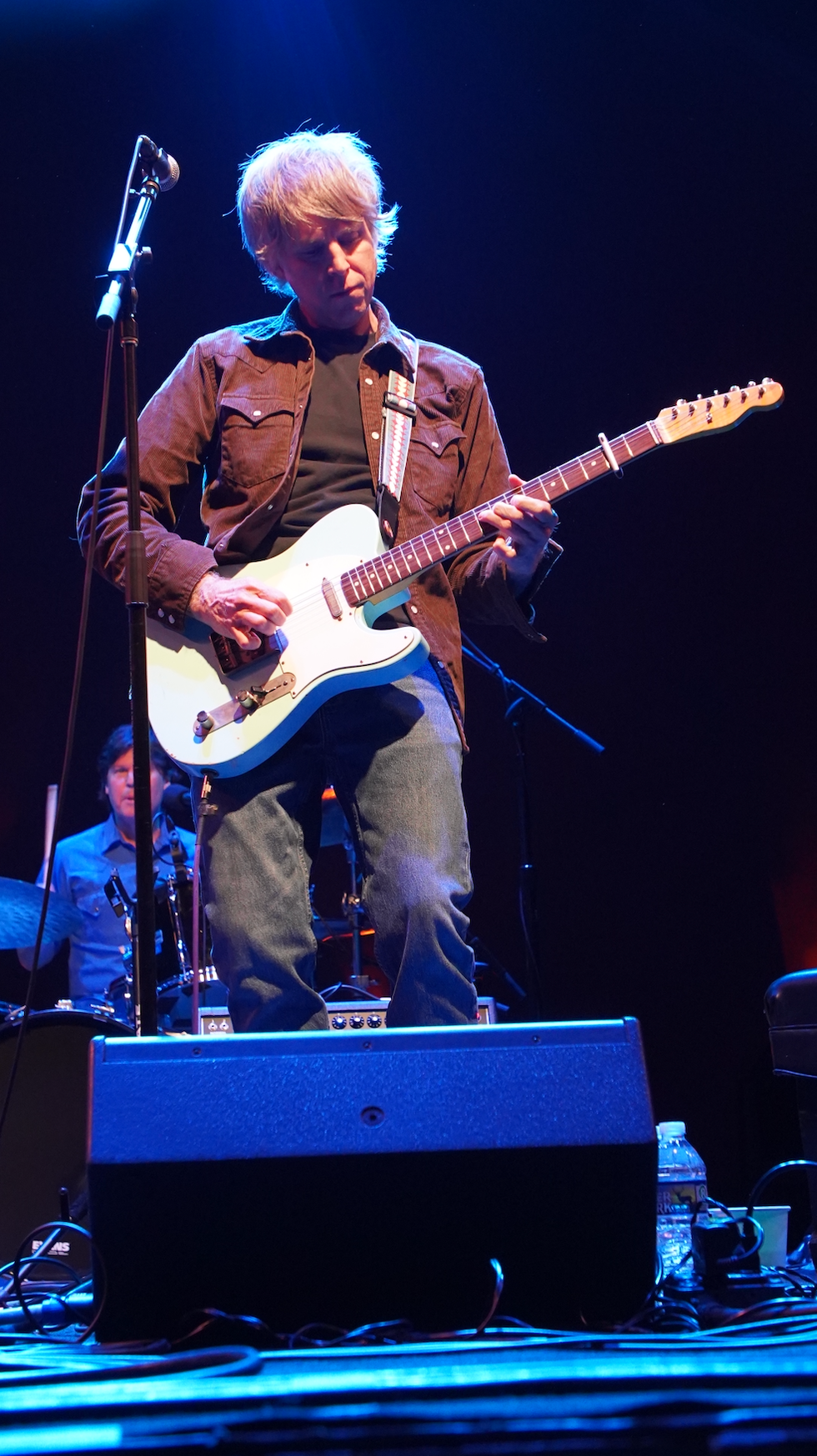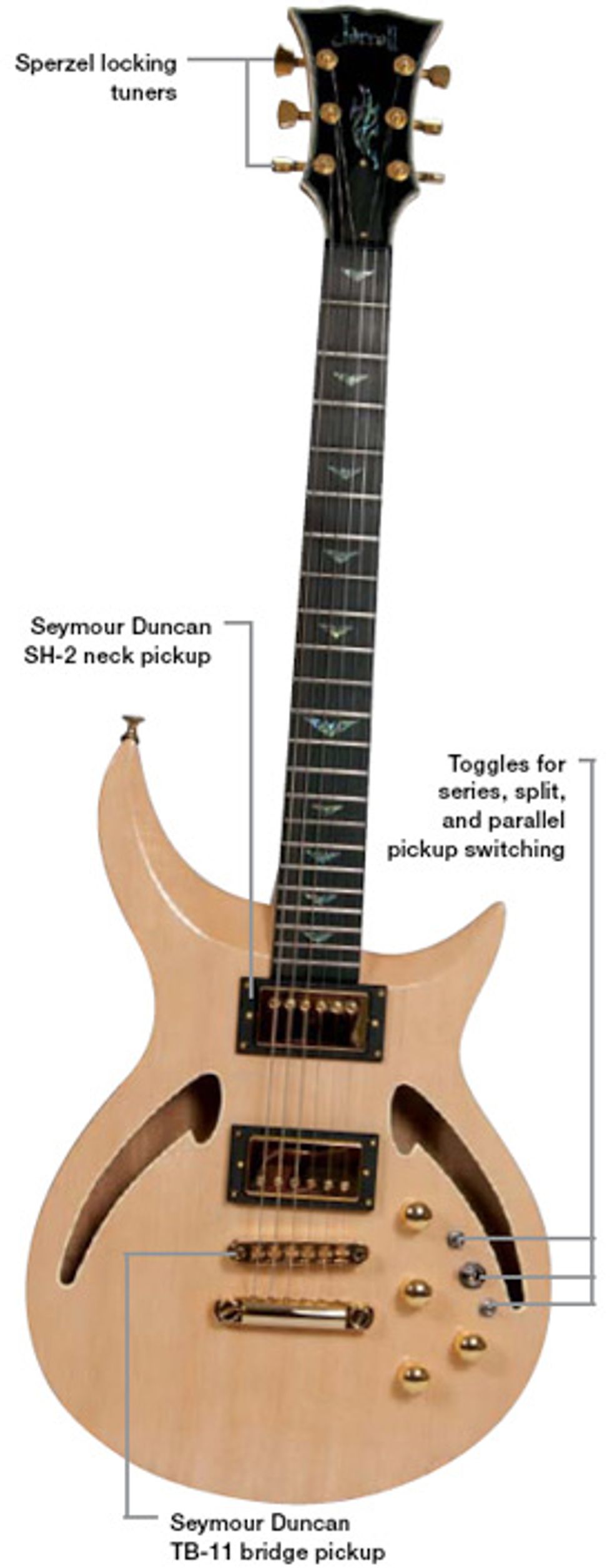 Download Example 1 Bridge SSP Download Example 2 Bridge Parallel Clean Download Example 3 Bridge Single then Parallel Download Example 4 Neck Single then Parallel Download Example 5 Bridge Single then Parallel Download Example 6 Neck Parallel |
A Complete Package
The JZH-1x gets your fingers tingling with anticipation before you even open the case. This really is a guitar review, I swear, but Jarrell’s six-latch, fitted hard case simply cannot be ignored. Its sleek, silver exterior looks like a cross between ancient stone and futuristic alloy, while the red cushioned interior—complete with built-in hygrometer and neck-length support/ storage compartment—cradles the JZH- 1x perfectly and even has cut-outs for the strap pins (something many manufacturers ignore). The case follows the guitar’s body shape, a design feature that seems much cooler than just another black, vinyl-covered rectangle.
While the JZH-1x is bound to divide opinion, it’s difficult not to be struck by the guitar’s bold aesthetics. Calling to mind Dean designs like the Icon and the Boca, as well as Rickenbacker design motifs, the JZH-1x’s body shape is familiar, yet exotic. It has an air that suggests the guitar came from somewhere you couldn’t even find on a map.
With its spruce top and mahogany back, the JZH-1x offers a tonewood combination that’s more like a quality flattop than a typical semi-hollow electric. Its hard maple neck has an ebony fretboard with colorful, butterfly-like abalone inlays, and the same abalone appears in the Jarrell name and logo on the bound headstock.
The JZH-1x comes loaded with good hardware too. A lot of new guitars leave you making mental notes of all the upgrading you’d do. Jarrell eliminates that entire mind trip by simply putting in great parts from the get-go. Sperzel locking tuners and a Graph Tech nut keep things stable and smooth up top, while the locking TonePros bridge and tailpiece pin things down at the other end.
The factory setup on the JZH-1x was spot-on right out of the case. The action was low without buzz, and the intonation was excellent—a nice bit of instant gratification for anyone who’s ever had to wait for their new guitar to be set up post-purchase. There’s plenty of room for bends on the Jarrell’s 12"-radius fretboard, and its C-shape neck and 24 3/4" scale was comfortable for my average-size hands. The neck carve felt slightly thicker than my Highway One Stratocaster, but a little thinner than the neck on my old Dean Cadillac.
Jarrell scores in construction quality and finish as well—the guitar feels tight and solid. And details like fret ends were clearly looked after with care. The guitar is well balanced too, and feels comfortable sitting or standing. While it’s certainly lighter than a solidbody, the JZH-1x is no featherweight and has very good natural sustain.
Muscle Under the Hood
Nothing is more disappointing than playing a great axe with lame pickups. Jarrell eliminates those concerns by putting a Seymour Duncan SH-2 in the neck and a TB-11 in the bridge position. The guitar sports two Volume and two Tone knobs, a standard 3-way switch, and two mini-switches with SSP wiring (series, split, parallel) that offer dozens of combinations and makes playing the JZH-1x nothing short of an adventure.
I ran the Jarrell through a Marshall MG100HDFX into a Line 6 Vetta cabinet with two 12" Celestions, left the EQ flat, and used just enough reverb to round off the edges. In series mode, the TB-11 bridge pickup delivers the goods clean or dirty, with plenty of power to provide clarity and a nice balance between highs and lows. Heavily distorted tones were airier than what you’d hear from a solidbody, but there’s more than enough definition and punch to crank out harmonically rich AC/DC rhythm tones and then some. Semi-hollows aren’t meant to be metal machines, but I did take the JZH-1x for a spin around that block, and it performed admirably with nothing more than the Marshall’s built-in overdrive channel to add gain. Rolling back either the pickup volume or the channel gain opens the doors to everything from smooth, warm distortion to more sizzling high-gain goodness.
The middle position of each mini-switch is split (single-coil) mode. The third position puts the pickup in parallel mode, which configures both coils side-by-side as individual single-coils, but with hum canceling. The output in these split and parallel positions is significantly less than in full humbucker mode, but there’s no sacrifice in harmonic richness.
Going through the JZH-1x’s pickup combinations is a great way to blow an entire afternoon experimenting with songs you thought you’d finished. I played several original pieces the same way I’ve played them for years, but with the flick of a switch, I was hearing them in a brand-new way. The JZH-1x delivers a fistful of tones without the hassle of adjusting parameters on an effects device.
The SH-2 neck pickup did not take as kindly to distortion as the TB-11. The woofier qualities of the semi-hollow were much more apparent in the neck position, and its booming low-end punch in series mode tended to overshadow the highs. Backing off the gain helped immensely and brought the SH-2 to a more reasonable balance. In parallel mode, the SH-2 had a beautiful, chiming voice with a round, smooth tone. Playing both pickups together in parallel mode yielded tight, cutting sounds and opened up a world of noiseless, single-coil joy.
The only thing I would change on the JZH-1x is the layout of the controls. The SSP mini-switches are placed on either side of the taller pickup selector, so several times I accidentally bumped the pickup toggle into the middle position, when I was trying to change the bridge mini-switch. I’d prefer to have the mini-switches next to each other in front of the pickup toggle, so you wouldn’t have to jump over it to get to the bridge SSP switch.
The Verdict
The JZH-1x’s chameleon-like tonal abilities, quality workmanship, and top-shelf parts add up to an instrument that can handle myriad musical styles with class. Experimenting with tones is a great way to grow your personal sound, and it’s inspiring to have that much sonic versatility at hand before you get anywhere near your amp EQ or effects box—especially when it comes to working in a home studio or stage when swapping out guitars for each part may not be practical or possible. The JZH-1x doesn’t come cheap, and its looks can be polarizing. But what it offers in craftsmanship, electronics, and tone means you might save some dough on all those guitars you won’t need.
Buy if...
you want a versatile, fully loaded semi-hollow capable of a multitude of tones, including some heavier sounds not usually associated with thinline archtops.
Skip if...
you want a straightforward rock or metal guitar and prefer to upgrade parts to your liking rather than get them all in one shot.
Rating...
